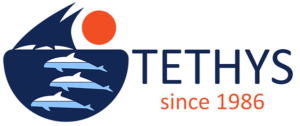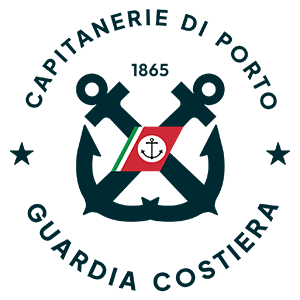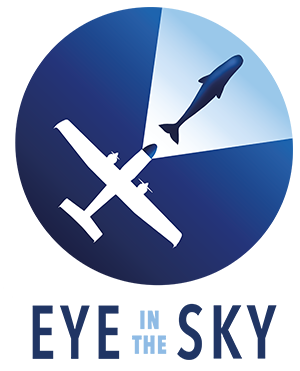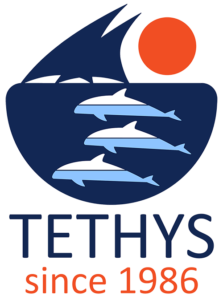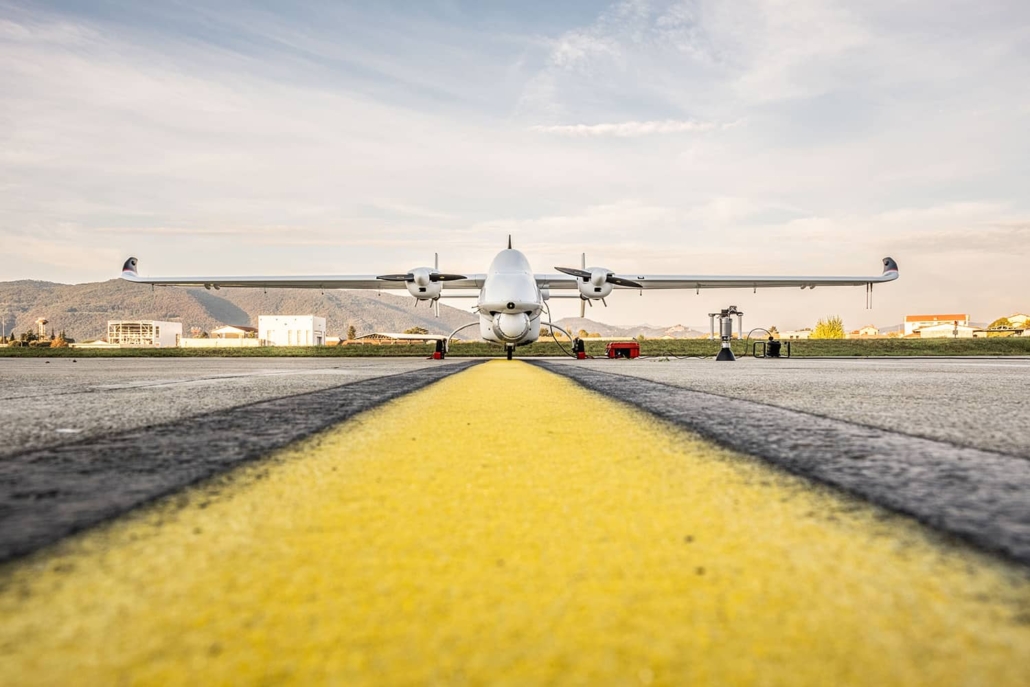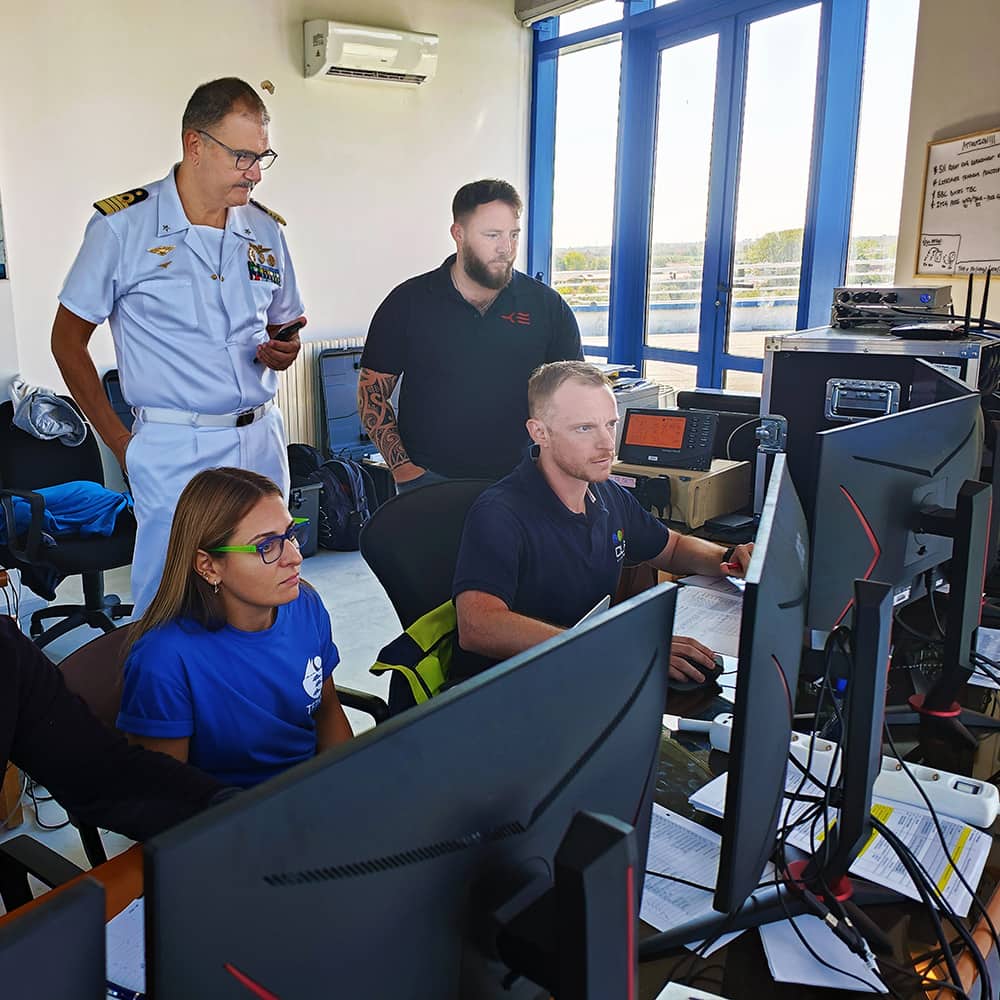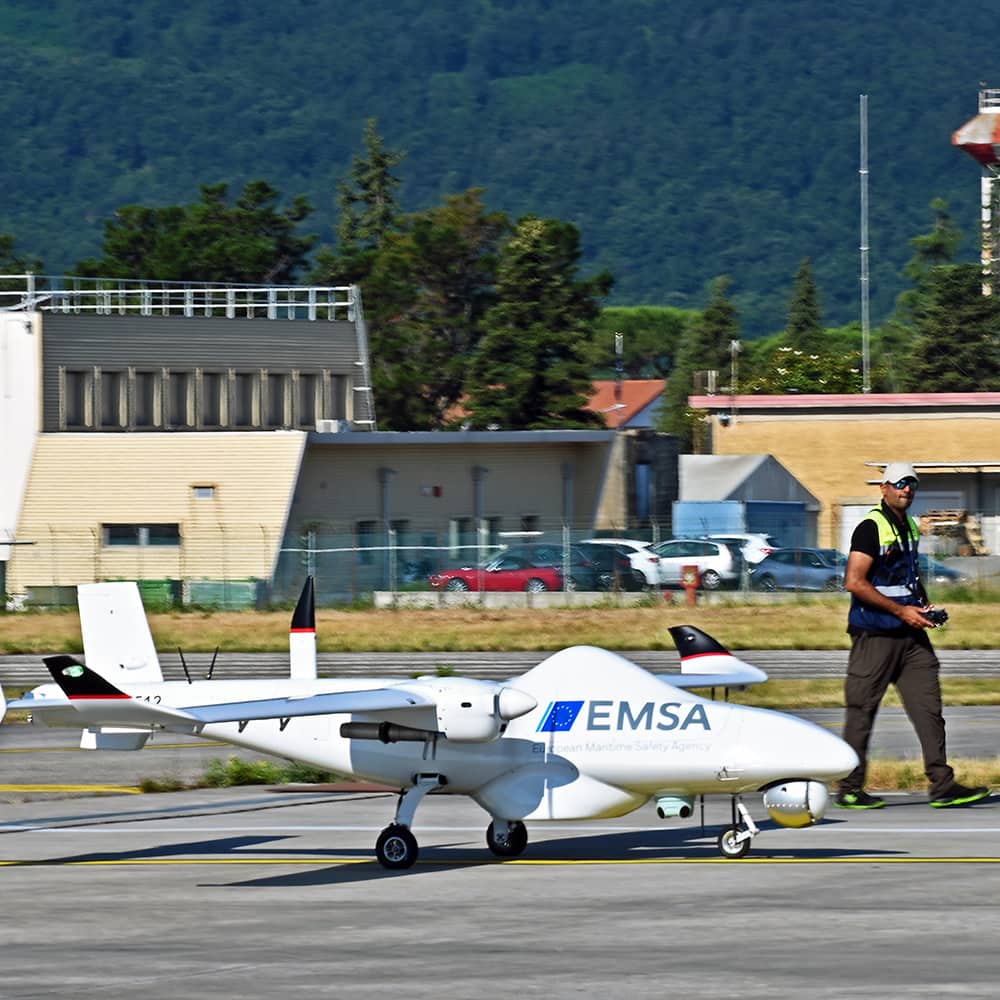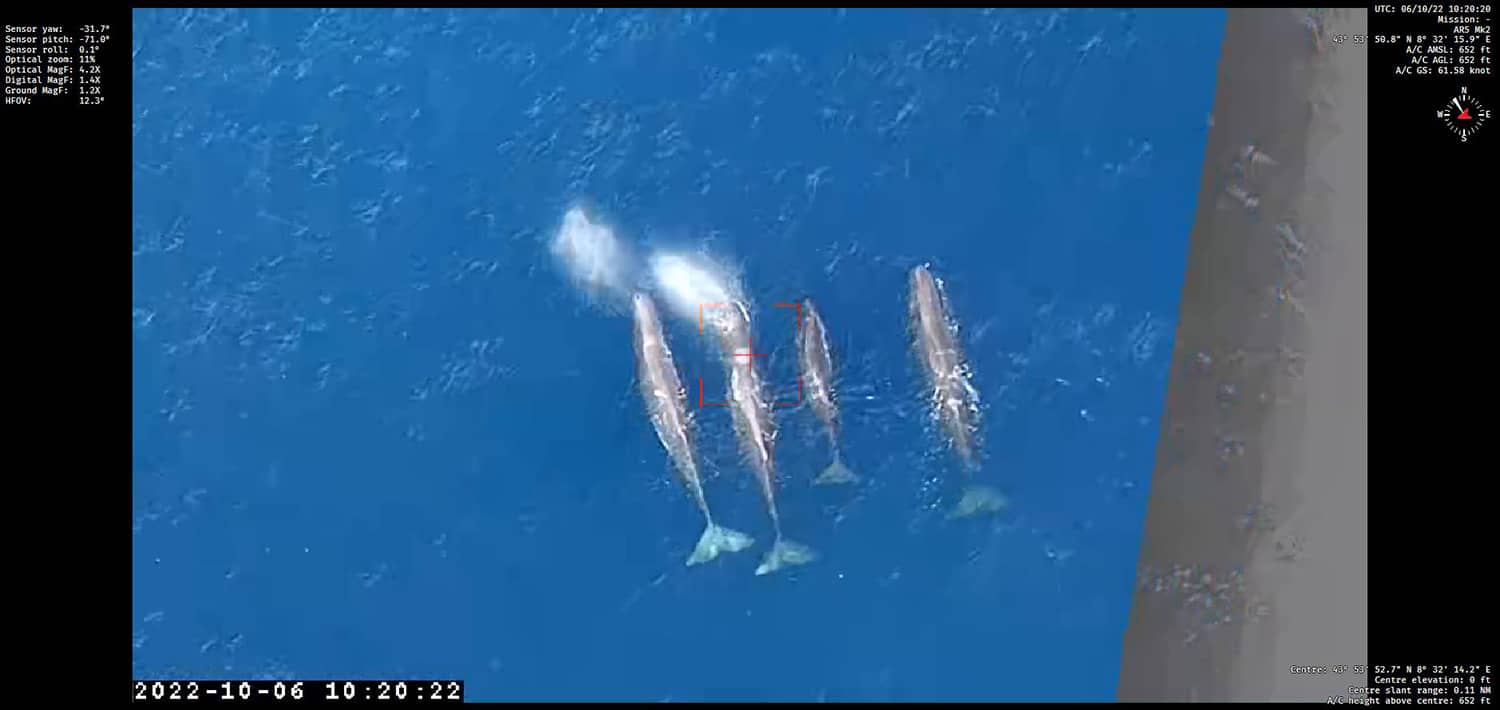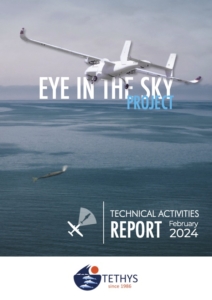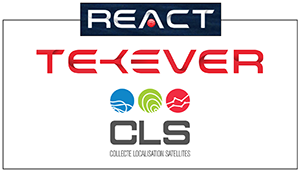Eye in the Sky
An innovative ‘eye’ for monitoring cetaceans in the Pelagos Sanctuary
“Eye in the Sky” is the name of the pilot project undertaken by the Italian Coast Guard in 2022 and 2023, in collaboration with Tethys, within the Pelagos Sanctuary.
Its primary objective was to evaluate the feasibility of employing a sizable fixed-wing drone, outfitted with cutting-edge sensor technology, for monitoring cetaceans.
The focal point of this research is the Tekever AR5 Evolution drone, an aerial platform equipped with sophisticated sensor technology, enabling the observation of significant marine vertebrates from an advantageous aerial perspective.
Boasting a wingspan of 7.30 meters, weighing approximately 180 kilograms, and a flight endurance of up to 12 hours, the drone operates at a cruising speed of about 100 km/h. Produced and operated by the Franco-Portuguese consortium REACT (comprising Tekever and CLS), the drone is supplied by the European Maritime Safety Agency (EMSA) to the Italian Coast Guard. EMSA extends support to member nations in establishing patrol services for environmental surveillance, pollution response, fisheries oversight, and maritime traffic monitoring.
In this instance, however, the drone was additionally deployed for an entirely distinct endeavor: pioneering the feasibility assessment of employing a remotely piloted vehicle, possessing the specifications akin to the AR5 Evolution, for the monitoring of cetaceans and other megafauna, including turtles and devil rays.
The objective is to explore the capacity of fixed-wing drones for cetacean monitoring and to gain insights into the technical intricacies associated with such monitoring endeavors. Central to this investigation is the Tekever AR5 Evolution drone, an aerial platform equipped with sophisticated sensor technology that facilitates the observation of significant marine vertebrates from an advantageous aerial perspective.
Conventionally, such surveys have been undertaken utilizing boats or small aircraft. However, employing drones confers notable advantages, including enhanced personnel safety, access to remote and challenging-to-reach areas, reduced environmental footprint through low fuel consumption, acquisition of high-quality imagery and behavioral data during aerial observations of animals, and mitigation of disturbance to cetaceans due to minimal noise emission.
The vehicle is outfitted with an advanced system comprising, among other components, an electro-optical sensor and an infrared sensor, enabling real-time transmission of images to the ground station via satellite. Additionally, it features an ultra-high resolution camera and a laser-pointing camera for enhanced data acquisition capabilities.
Departing from the Coast Guard Air Base Command in Sarzana, the Tekever AR5 Evolution executed 54 missions, accumulating a total of 113 flight hours and covering a distance of 11,430 kilometers during its survey activities. Throughout this period, the drone traversed 23 horizontal transects, spaced 1.3 kilometers apart, each extending 34 kilometers in length. Various altitudes and survey methodologies were tested during these operations.
Seven of the eight cetacean species regularly present in the Mediterranean Sea were sighted during 66 sightings: 24 of fin whale (Balaenoptera physalus), 14 of striped dolphin (Stenella coeruleoalba), 7 of sperm whale (Physeter macrocephalus), 3 of long-fined pilot whale (Globicephala melas), 2 ofCuvier’s beaked whale (Ziphius cavirostris), 2 of Risso’s dolphin (Grampus griseus) and 2 of common bottlenose dolphin (Tursiops truncatus), plus 12 sightings of unidentified animals.
The results of the first phase were presented during the Annual Congress of the European Cetacean Society in O Grove, Spain in April 2023, while the overall results of the two phases were presented in the Annual Congress of the European Cetacean Society in Catania, Italy in April 2024.
This pilot study serves as a crucial foundation for informing future applications of this technology in the realm of conservation and safeguarding of marine megafauna. For further details, please refer to the Technical Report and a short video.
Download the report
Acknowledgments are extended to EMSA for its support of this pioneering project undertaken by the Italian Coast Guard in collaboration with the Tethys Institute. Appreciation is also expressed to the dedicated staff of the REACT Consortium for its cooperation and collaborative efforts.
Gratitude is extended to AMER YACHT, SIRAM VEOLIA and FLOWE for their valuable support to the Tethys Institute.
Eye in the Sky
Un ”occhio” innovativo per il monitoraggio dei cetacei nel Santuario Pelagos
“Eye in the Sky” è il nome del progetto pilota che la Guardia Costiera Italiana ha condotto nel 2022 e 2023 in collaborazione con l’Istituto di ricercaca Tethys all’interno del Santuario Pelagos per verificare il potenziale utilizzo di un grande drone ad ala fissa dotato di sofisticata sensoristica per il monitoraggio dei cetacei.
Al centro di questa ricerca c’è il drone Tekever AR5 Evolution, un mezzo aereo con avanzata sensoristica che permette l’osservazione dei grandi vertebrati marini da un punto di vista decisamente privilegiato.
Con un’apertura alare di 7,30 metri, un peso di circa 180 kg, un’autonomia di volo fino a 12 ore e una velocità di crociera di circa 100 km orari, il drone, prodotto e gestito dal consorzio franco-portoghese REACT (Tekever e CLS), è messo a disposizione della Guardia Costiera Italiana dall’Agenzia Europea per la Sicurezza Marittima (EMSA), che sostiene i paesi membri per implementare il servizio di pattugliamento per la sorveglianza ambientale e la risposta agli inquinamenti, per la vigilanza della pesca e il monitoraggio del traffico marittimo.
In questo caso però il drone è stato utilizzato anche per un progetto completamente diverso:
testare per la prima volta la fattibilità di monitore i cetacei e altri grandi vertebrati marini, come tartarughe e mobule, con un veicolo a pilotaggio remoto con le caratteristiche dell’AR5 Evolution.
Tradizionalmente questi tipi di survey vengono condotti mediante imbarcazioni o piccoli aerei, ma impiegare i droni comporta vantaggi non indifferenti, come la sicurezza del personale, la possibilità di raggiungere zone difficilmente accessibili, volare con un basso consumo di carburante riducendo l’impatto ambientale, consentire di raccogliere immagini di alta qualità e dati comportamentali sorvolando gli animali, minimizzare il disturbo sui cetacei producendo livelli di rumore molto bassi.
Il mezzo è dotato di un sofisticato sistema che include, tra gli altri, una telecamera ottica e un sensore a infrarossi che permettono di trasmettere via satellite in tempo reale le immagini alla base, nonché una macchina fotografica ad altissima risoluzione e una telecamera a puntamento laser.
Partendo dal Comando Base Aeromobili Guardia Costiera di Sarzana, il Tekever AR5 Evolution ha compiuto 54 missioni totalizzando 113 ore di volo e 11.430 km di pattugliamento. Durante questo periodo, il drone ha sorvolato 23 transetti orizzontali, distanziati di 1,3 km, ciascuno lungo 34 km, testando anche diverse altitudini e metodologie di rilevamento.
Sono state avvistate sette delle otto specie di cetacei regolarmente presenti in Mediterraneo nel corso di 66 avvistamenti: 24 di balenottera comune (Balaenoptera physalus), 14 di stenella striata (Stenella coeruleoalba), 7 di capodoglio (Physeter macrocephalus), 3 di globicefalo (Globicephala melas), 2 di zifiio (Ziphius cavirostris), 2 di grampo (Grampus griseus) e 2 di tursiopi (Tursiops truncatus), più 12 di animali non identificati.
I risultati della prima fase sono stati durante il Congresso Annuale della European Cetacean Society a O Grove in Spagna, nell’aprile 2023, quelli complessivi delle due fasi sono stati invece presentati durante il Congresso Annuale della European Cetacean Society a Catania nell’aprile del 2024.
Questo studio pilota rappresenta un’importante base di conoscenza per futuri utilizzi di questa tecnologia al servizio della conservazione e la protezione della megafauna marina.
Per maggiori informazioni visionare il Technical Report e un breve video.
Scarica il report
Grazie ad EMSA per aver sostenuto questo nuovo progetto della Guardia Costiera italiana condotto in collaborazione con l’Istituto Tethys e al personale di REACT Consortium per la disponibilità e lo spirito collaborativo.
Grazie a AMER YACHT, SIRAM VEOLIA e FLOWE per il loro prezioso supporto all’Istituto Tethys
